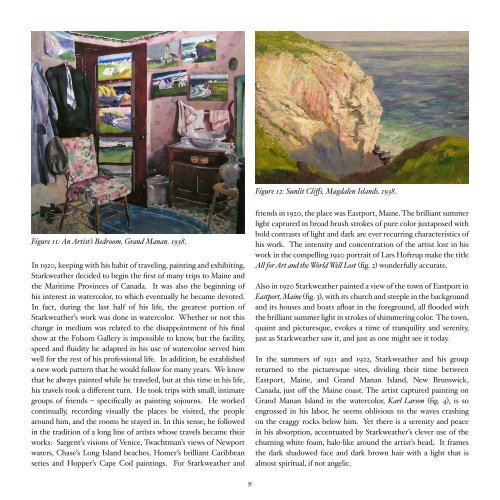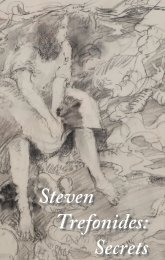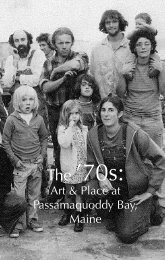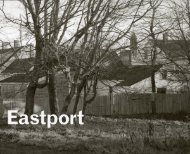Starkweather Catalogue
You also want an ePaper? Increase the reach of your titles
YUMPU automatically turns print PDFs into web optimized ePapers that Google loves.
Figure 12: Sunlit Cliffs, Magdalen Islands. 1938.<br />
Figure 11: An Artist’s Bedroom, Grand Manan. 1938.<br />
In 1920, keeping with his habit of traveling, painting and exhibiting,<br />
<strong>Starkweather</strong> decided to begin the first of many trips to Maine and<br />
the Maritime Provinces of Canada. It was also the beginning of<br />
his interest in watercolor, to which eventually he became devoted.<br />
In fact, during the last half of his life, the greatest portion of<br />
<strong>Starkweather</strong>’s work was done in watercolor. Whether or not this<br />
change in medium was related to the disappointment of his final<br />
show at the Folsom Gallery is impossible to know, but the facility,<br />
speed and fluidity he adapted in his use of watercolor served him<br />
well for the rest of his professional life. In addition, he established<br />
a new work pattern that he would follow for many years. We know<br />
that he always painted while he traveled, but at this time in his life,<br />
his travels took a different turn. He took trips with small, intimate<br />
groups of friends – specifically as painting sojourns. He worked<br />
continually, recording visually the places he visited, the people<br />
around him, and the rooms he stayed in. In this sense, he followed<br />
in the tradition of a long line of artists whose travels became their<br />
works: Sargent’s visions of Venice, Twachtman’s views of Newport<br />
waters, Chase’s Long Island beaches, Homer’s brilliant Caribbean<br />
series and Hopper’s Cape Cod paintings. For <strong>Starkweather</strong> and<br />
friends in 1920, the place was Eastport, Maine. The brilliant summer<br />
light captured in broad brush strokes of pure color juxtaposed with<br />
bold contrasts of light and dark are ever-recurring characteristics of<br />
his work. The intensity and concentration of the artist lost in his<br />
work in the compelling 1920 portrait of Lars Hoftrup make the title<br />
All for Art and the World Well Lost (fig. 2) wonderfully accurate.<br />
Also in 1920 <strong>Starkweather</strong> painted a view of the town of Eastport in<br />
Eastport, Maine (fig. 3), with its church and steeple in the background<br />
and its houses and boats afloat in the foreground, all flooded with<br />
the brilliant summer light in strokes of shimmering color. The town,<br />
quaint and picturesque, evokes a time of tranquility and serenity,<br />
just as <strong>Starkweather</strong> saw it, and just as one might see it today.<br />
In the summers of 1921 and 1922, <strong>Starkweather</strong> and his group<br />
returned to the picturesque sites, dividing their time between<br />
Eastport, Maine, and Grand Manan Island, New Brunswick,<br />
Canada, just off the Maine coast. The artist captured painting on<br />
Grand Manan Island in the watercolor, Karl Larson (fig. 4), is so<br />
engrossed in his labor, he seems oblivious to the waves crashing<br />
on the craggy rocks below him. Yet there is a serenity and peace<br />
in his absorption, accentuated by <strong>Starkweather</strong>’s clever use of the<br />
churning white foam, halo-like around the artist’s head. It frames<br />
the dark shadowed face and dark brown hair with a light that is<br />
almost spiritual, if not angelic.<br />
9






